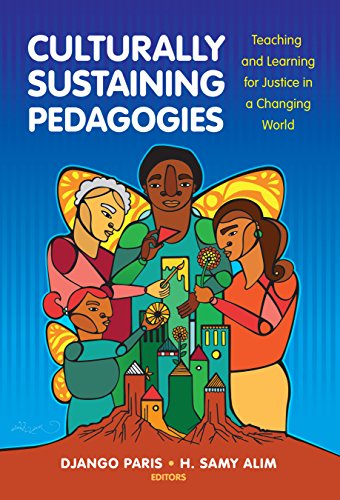 Django Paris began his November 8, 2018 talk at Hunter College on culturally sustaining pedagogies with a “land acknowledgement.” He took the time to recognize that we were on Lenape land and encouraged everyone in the audience to acknowledge “whose land your school exists on and to carry that forward” in your work.
Django Paris began his November 8, 2018 talk at Hunter College on culturally sustaining pedagogies with a “land acknowledgement.” He took the time to recognize that we were on Lenape land and encouraged everyone in the audience to acknowledge “whose land your school exists on and to carry that forward” in your work.
His comments resonated with me because I have recently been thinking a lot about literacy instruction in elementary classrooms in New York City. In particular, I’ve been pondering what the current research and thinking is surrounding effective literacy instruction, how teachers negotiate “fitting everything in” with myriad curriculum and assessment demands, how we can teach in culturally sustaining ways – and, given that it’s November, I’ve also been thinking about the “typical” Thanksgiving narratives that are so often presented in elementary schools and how problematic (and inaccurate) they tend to be.
All of these thoughts that were swirling in my head came together for me the other night. I read Debbie Reese’s (2018) article in Language Arts, titled, “Critical Indigenous Literacies: Selecting and Using Children’s Books about Indigenous Peoples” and thought about how – even with oftentimes rigid instructional constraints – most teachers (in my experience) find time to do some reading, writing, and/or talking about Thanksgiving in the month of November. By extension, Native peoples tend to be addressed in some way; often (again, in my anecdotal experience), this might be the only time Indigenous peoples are mentioned in the elementary classroom. So, I thought, “How can we – as literacy specialists and teacher educators – support teachers to teach about Native peoples in more culturally sustaining ways?” To start, let’s not only mention this diverse group of peoples around Thanksgiving – and, when we do discuss Thanksgiving, let’s try to be accurate in our portrayal of the events that occurred before and after that first Thanksgiving.
Addressing all of the issues with how Indigenous peoples are portrayed – or not portrayed – in our elementary literacy, social studies, science, and math classrooms is beyond the scope of this blog post. Certainly, tackling the history of linguistic, cultural, and physical genocide of Native peoples and teaching for and about Indigenous peoples in culturally sustaining ways goes beyond book selection; it’s about much more than texts. It’s (partly) about unlearning our biases around Native peoples that have likely been ingrained in us partially through texts we’ve read, such as textbooks, and those texts that we haven’t read. It’s (partly) about learning more about tribal sovereignty and learning more about the “real” histories of Indigenous peoples… Yet, when only 8 children’s books published in 2016 were written by Indigenous authors and featured Indigenous characters, the books we choose to read in our elementary classrooms is one small place to start.
Reese (2018) gives four simple guidelines for teachers when selecting books about Indigenous peoples. 1) Choose books that are tribally specific; 2) Use present tense verbs to talk about Native Nations; 3) Choose books by Native writers; 4) Use books by Native writers all year round. That’s it! These guidelines are not too daunting to follow; I think they are manageable for even the busiest teachers. To get you started in your book selection, here are some resources to peruse:
-
American Indians in Children’s Literature (Debbie Reese’s Website):
-
American Indian Library Association Awards:
-
School Library Journal “100 Books by Indigenous Masters”
-
#OwnVoices, The Conscious Kid blog on Medium: #IndigenousReads by Indigenous Writers, #WeNeedDiverseBooks
Read through these lists of great books – and then go read the books and share them with your students!
(Note: For people who’d like to read more of Debbie Reese’s work, I also suggest her 2013 piece in the SAGE Handbook for Early Childhood Literacy, “Critical Indigenous Literacies.”)
